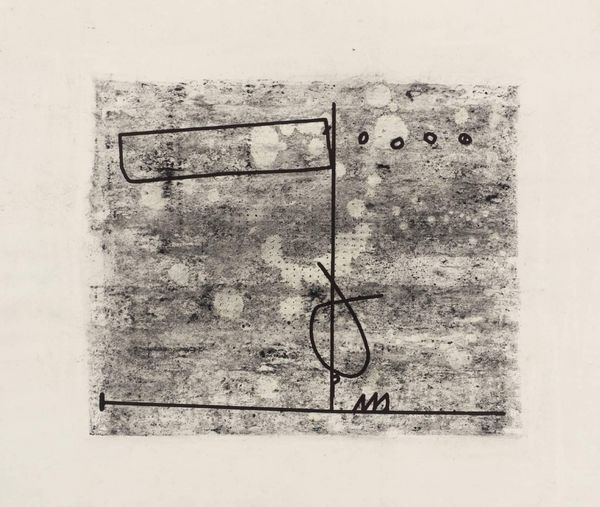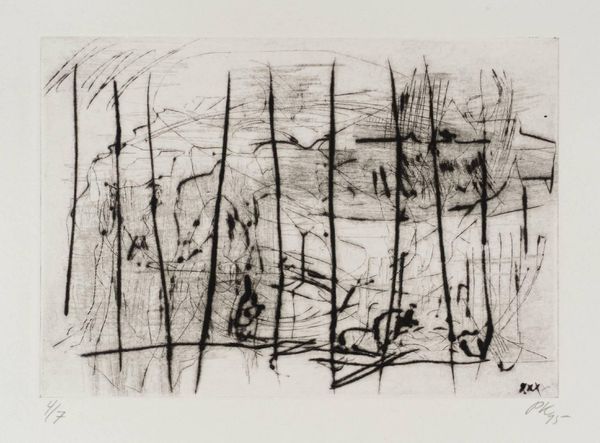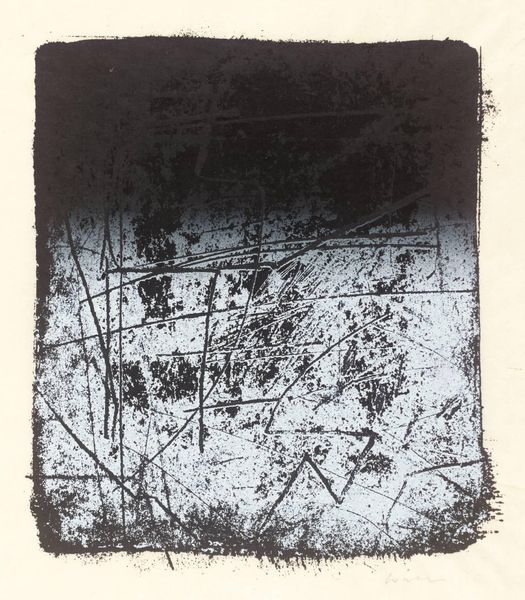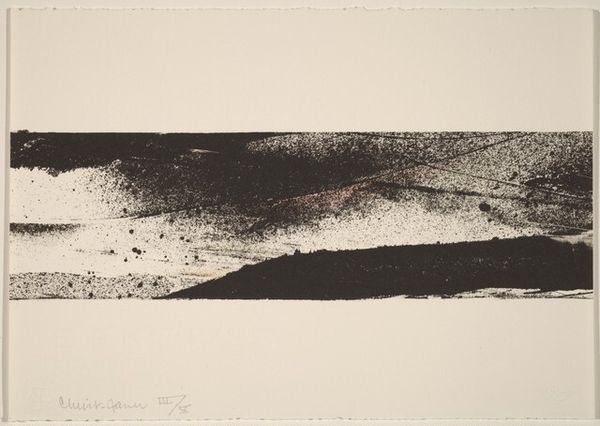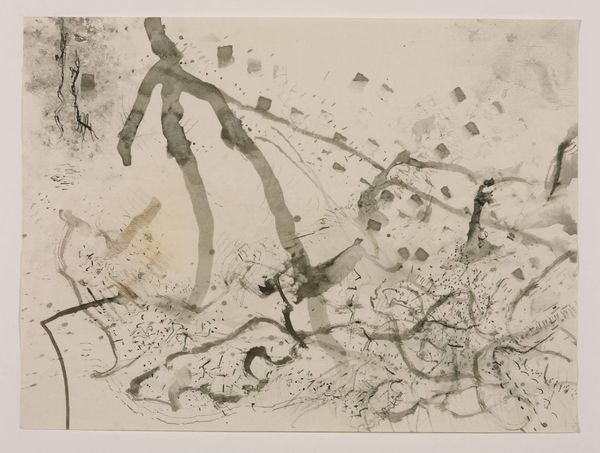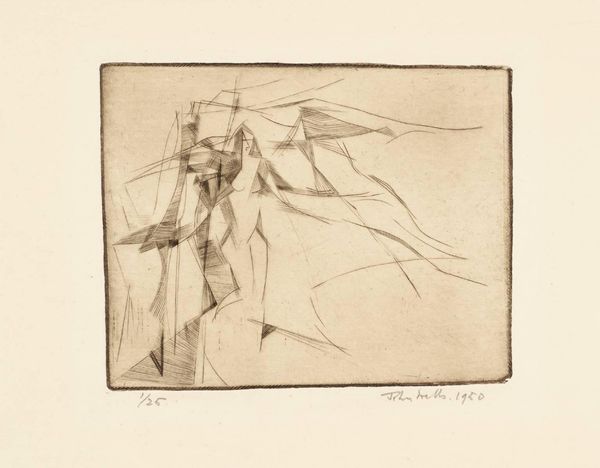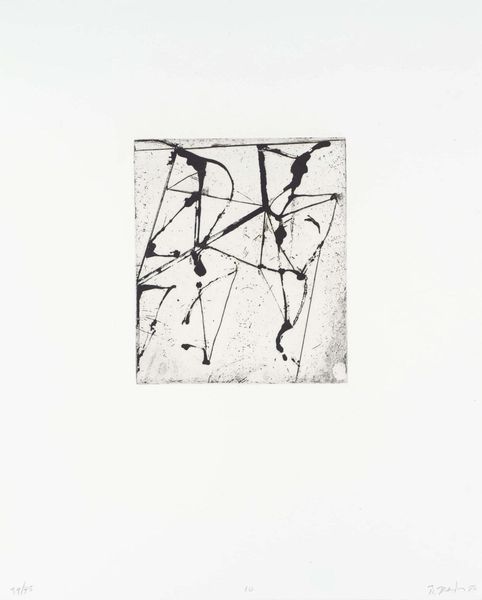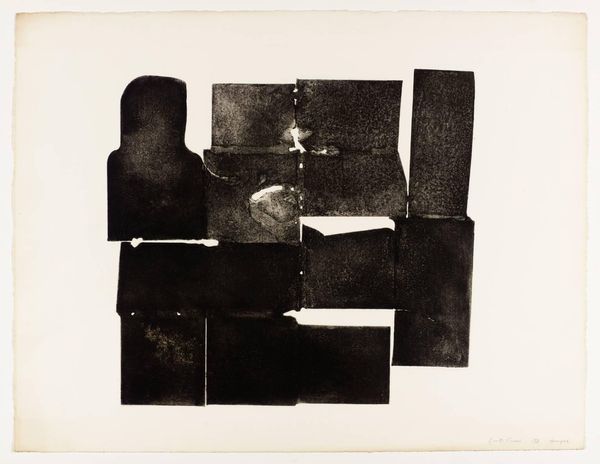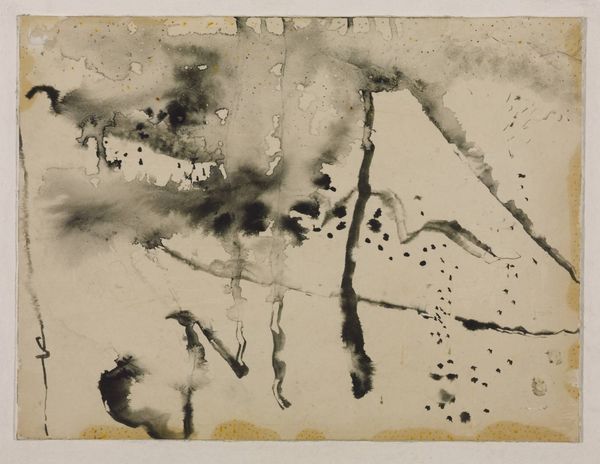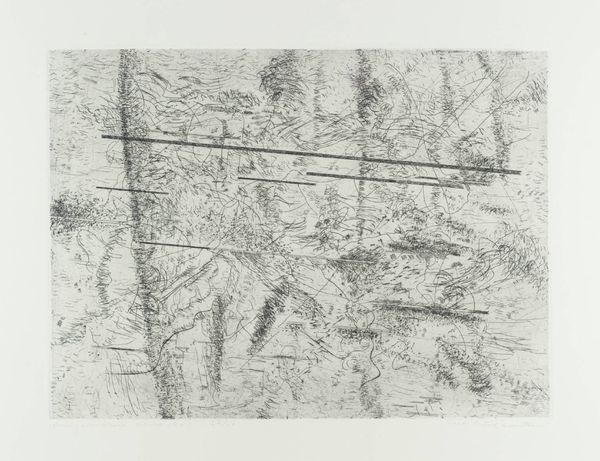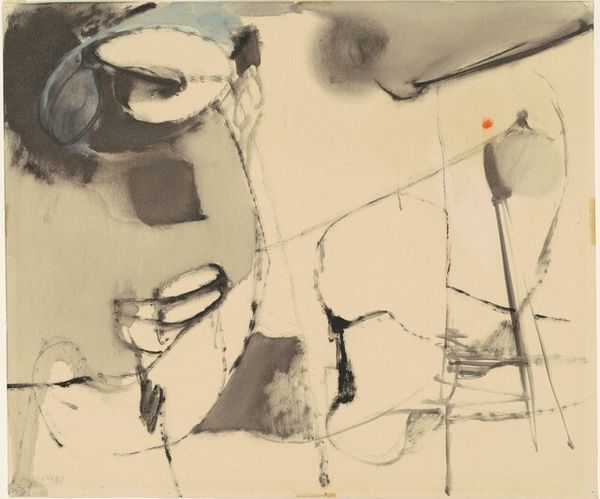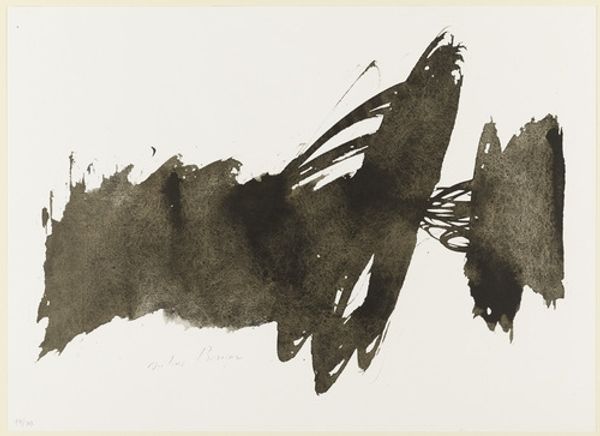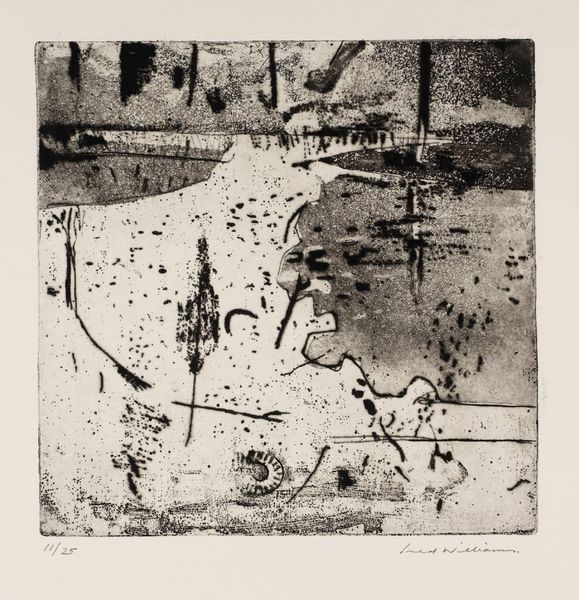
Dimensions: image: 177 x 225 mm
Copyright: © The estate of Richard Hamilton | CC-BY-NC-ND 4.0 DEED, Photo: Tate
Editor: Richard Hamilton's "Microcosmos: plant cycle" presents a fascinatingly stark landscape. The plants are reduced to near-abstract symbols. What do you see in these minimal forms? Curator: The symbols resonate with alchemical traditions, where plants are not just organic matter but embodiments of transformation. Notice how the horizon divides the world—a visual echo of the macrocosm-microcosm divide, reflecting ancient beliefs about humanity's place in the universe. Do you find this evokes a sense of harmony or discord? Editor: Harmony, definitely. I hadn't considered the alchemical connection, but it adds a whole new layer to the plant symbols. Curator: Indeed. It seems Hamilton is inviting us to contemplate our connection to the natural world and our symbolic understanding of it. Editor: So much more to this tiny world than I initially thought. Thank you for showing me that.
Comments
tate 7 months ago
⋮
http://www.tate.org.uk/art/artworks/hamilton-microcosmos-plant-cycle-p07654
Join the conversation
Join millions of artists and users on Artera today and experience the ultimate creative platform.
tate 7 months ago
⋮
These prints, with their tentative shapes resembling amoebae, anemones and other forms of microscopic life, were made in response to D'Arcy Wentworth Thompson's book on morphology On Growth and Form (1917). The book was a scientific study of the forms in nature, which argued that recognisable mathematical structures can be found in all organisms. The print titled Heteromorphism was used as the cover of a catalogue for Growth and Form, an exhibition inspired by Thompson's theories, which Hamilton and Nigel Henderson organised in 1951, when they were both studying at the Slade School of Art. (See display cases). Gallery label, August 2004
